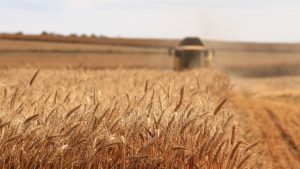
Climate Experience:
Grain farmers are experiencing drier seasons and smaller yields.
Explanation:
- Yield potential across the country has declined by 27% over the past quarter of a century.[1]
- Victoria has seen substantial decreases in its winter crop production, 2018 saw a 51% decline in wheat yield, 48% in barley and 60% in canola.[2]
- Climate variation is the dominant factor that impacts grain yields.[3]
- More extreme temperature and less rainfall can prevent crops from growing.[4][5]
- The region has experienced 19 of the past 21 years above average annual temperatures.[6]
- The region has seen average temperature rise up to 1.6 degrees since 1950 and annual rainfall decline up to 300mm.[7]
Ramifications:
- Yields are expected to continue to decline.[8]
- Victoria has nearly 7,000 grain farm businesses contributing $1.6billion to the economy,[9]this is expected to be disrupted.
- Food insecurity and prices are both expected to rise.[10]
- Poorer regions of the world will be particularly hard hit.[11]
- Australia may have to import key commodities like wheat in the future.[12]
What can be done?
- Email your local MP and tell them that action on climate is important to you and explain the impacts being felt in your area. One email might not feel like much but most politicians consider it to be representative of 100 citizens.
- Help support the Act on Climate collective by donating; we are leading the charge for climate action. Your donation helps in advancing policies that prevent climate change from getting worse, we aim to empower communities and build a strong pro-climate-action constituency that governments can’t ignore, and as an added bonus it’s tax-deductable.
- Get involved with Act on Climate. We meet every Monday at 6pm (upstairs at 312 Smith St, Collingwood) and welcome all newcomers to join in the fight for climate justice. If you are unable to attend, follow us on Facebook, Twitter and Instagram to keep up with the latest campaign.
* We aim to keep our material as accurate and as relevant as possible. Working with climate science, a field that is being constantly updated, keeps us on our toes. Information on this site was gathered on June 1 2019; if you notice information that needs updating please let us know. For the full reference list please see the following.
_____________________________
[1]“Australia’s wheat yields stalled,” CSIRO, published February 9, 2017, https://www.csiro.au/en/News/News-releases/2017/Australias-wheat-yields-stalled
[2]Australian Bureau of Agriculture and Resource Economics and Sciences, “Australian Crop Report,” (Canberra2019).14.
[3]Deepak K Ray et al., “Climate Variation Explains a Third of Global Crop Yield Variability,” Nature communications6 (2015).1.
[4]“Climate Impacts on Agriculture and Food Supply,” United States Environmental Protection Agency, accessed April 29, 2019, https://archive.epa.gov/epa/climate-impacts/climate-impacts-agriculture-and-food-supply.html
[5]Zvi Hochman, David L Gobbett, and Heidi Horan, “Climate Trends Account for Stalled Wheat Yields in Australia since 1990,” Global Change Biology23, no. 5 (2017).2077.
[6]“Australian Climate Change Site Data – Nhill”, Bureau of Meteorology, access April 23 2019, http://www.bom.gov.au/cgi-bin/climate/hqsites/site_data.cgi?variable=maxT&area=aus&station=078015&dtype=anom&period=annual&ave_yr=0
[7]State Government Victoria, “Climate-Ready Victoria: Grampians,” (Melbourne2015).2.
[8]Department of Climate Change and Energy Efficiency, “Fact Sheet – Victoria,” (Canberra2012).2.
[9]“Grains and other crops,” Agriculture Victoria, accessed April 29,2019, http://agriculture.vic.gov.au/agriculture/grains-and-other-crops
[10]Tim Wheeler and Joachim Von Braun, “Climate Change Impacts on Global Food Security,” Science341, no. 6145 (2013).508.
[11]“Climate impacts on food security,” World Food Programme, accessed April 29, 2019, https://www.wfp.org/climate-change/climate-impacts
[12]Hughes et al., “Feeding a Hungry Nation: Climate Change, Food and Farming in Australia.”2.
